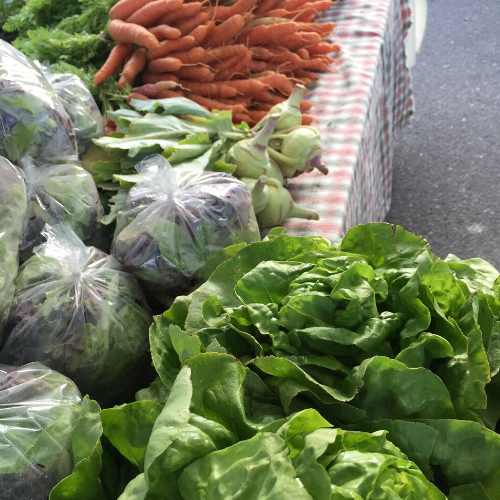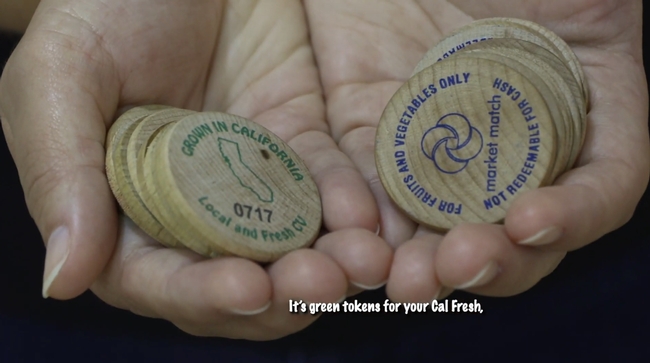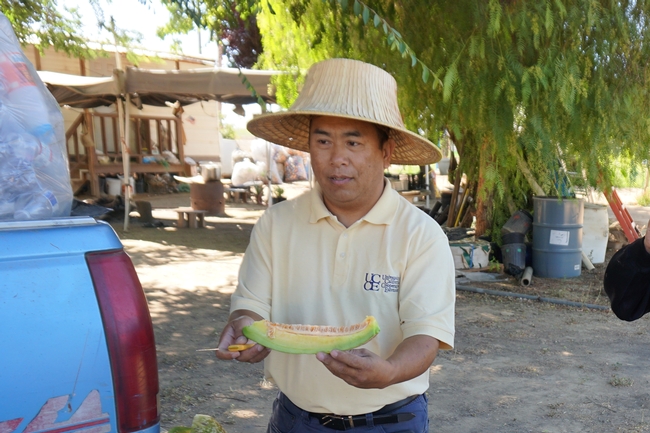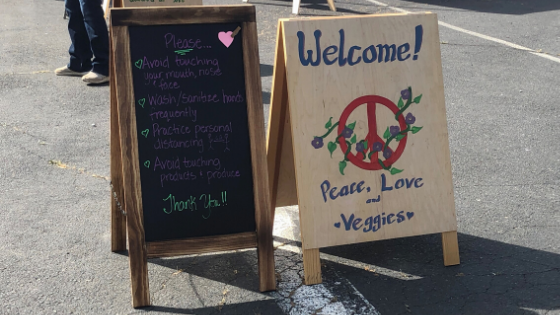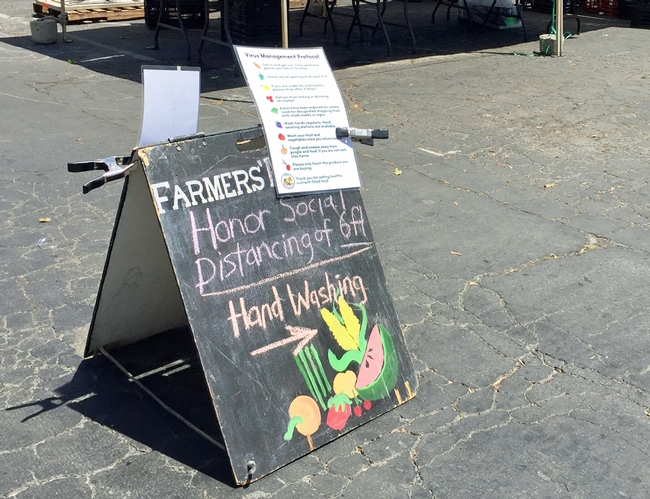
Posts Tagged: farmers
UCCE is helping CalFresh shoppers double food dollars at farmers markets
Across California, CalFresh shoppers can use their EBT cards at most farmers markets and double the value of their benefit, up to $10 per family each market day.
“This benefit is underused,” said Chutima Ganthavorn, nutrition, family and consumer sciences advisor in Riverside and San Bernardino counties. “There may be a perception that farmers market prices are higher than in regular grocery stores.”
To help promote the Market Match program that makes shopping at farmers markets more affordable for CalFresh customers, Ganthavorn worked with the UC Agriculture and Natural Resources news and information outreach in Spanish office to develop videos in English and Spanish that clearly explain the program for potential users.
“Our program, CalFresh Healthy Living, UCCE, provides nutrition education to CalFresh-eligible participants in Coachella Valley to promote increasing consumption of locally grown, fresh fruits and vegetables,” Ganthavorn said. “Increasing buying power at farmers markets helps participants incorporate delicious, local produce into affordable meals for the whole family.”
To use Market Match, CalFresh recipients visit a kiosk at the market and use their EBT card to purchase $10 in wooden tokens. The program provides an additional $10 in tokens for purchase of fruits and vegetables only. The $20 can then be used to purchase items at all the farmers' booths that day at the market. Shoppers can look up participating farmers markets by going to FMFinder.org.
“Wow! These (videos) are terrific,” said Megan Goehring, the manager of the Palm Springs farmers market. “Will share on social media today.”
Senior Farmers Market Nutrition Program vouchers and Women, Infants and Children vouchers can also be used at participating farmers markets.
Below are the videos and their YouTube URLs for easy sharing:
Spanish -
English - https://youtu.be/dz6R_l123AE
Southeast Asian farmers devastated by cononavirus closures
With sales down dramatically at Asian markets and restaurants, crops on Southeast Asian farms have been left to wither away in the fields, reported Donald Promnitz in The Business Journal.
“I would say it's a 100% loss. I can't sell anything," said Chongyee Xiong, who used his earnings as a school groundskeeper to pay upfront expenses for his farm.
According to UC Cooperative Extension in Fresno, there were nearly 2,000 Asian farms in the San Joaquin Valley area in 2015. Roughly 70% of these were run by Hmong growers. The farmers typically produce crops they had previously cultivated in Laos — including Thai peppers, bok choy, snow peas and lemongrass. Some grow strawberries.
Farmer Chue Lee applied for loans through the federal Paycheck Protection Program, but found out he didn't have enough employees to qualify for aid. With a loss of about 70%, Lee may not be able to afford the lease for the two portions of land he has in Fresno County, which together amount to roughly 12 acres. Meanwhile, his own ability to access customers has been made more difficult by his wife's heart condition — which would make a Covid-19 infection devastating for her, the article said.
“Everything that we make, all that we're saving now is just like already out there and there's no help for us at all,” Lee said. “We tried to apply for all the releases, but there's nothing that fits into our category.”
UCCE ag assistant Michael Yang said there are also issues with technical literacy for the farmers. And without training with a computer, accessing aid online becomes nearly impossible. It increases the odds of losing everything.
“It's pretty tough when you come to a country where you have to relearn everything and the first thing you know is just farming,” Yang said. “And just bringing the clothes on your back is pretty much what you have.”
Supporting farmers markets in the time of COVID-19
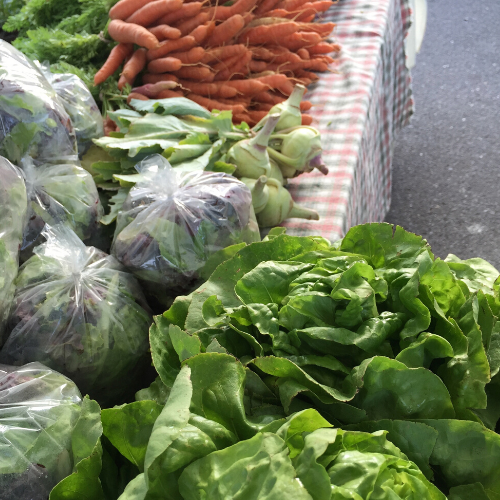
Bay Area Bee Fair on Oct. 13: The Place to 'Bee'
It's a fair. It's a party. It's a pollinator party. It's the Bay Area Bee Fair in Berkeley. And...
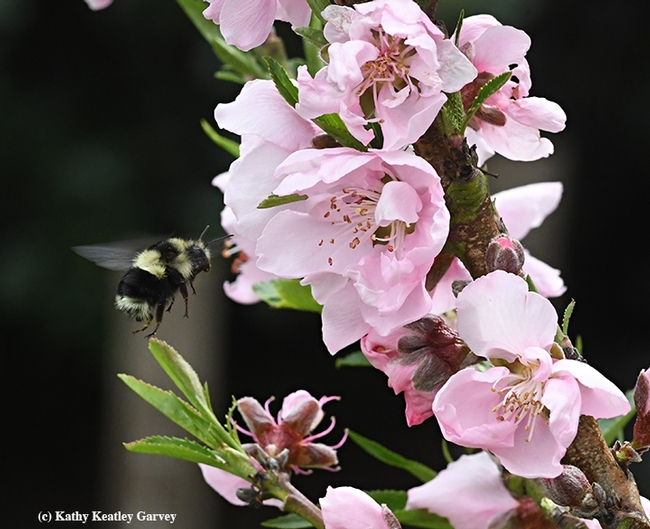
Black-tailed bumble bee, Bombus melanopygus, nectaring on nectarine blossoms. (Photo by Kathy Keatley Garvey)

A yellow-faced bumble bee, Bombus vosnesenskii, nectaring on Mexican sunflower, Tithonia. (Photo by Kathy Keatley Garvey)
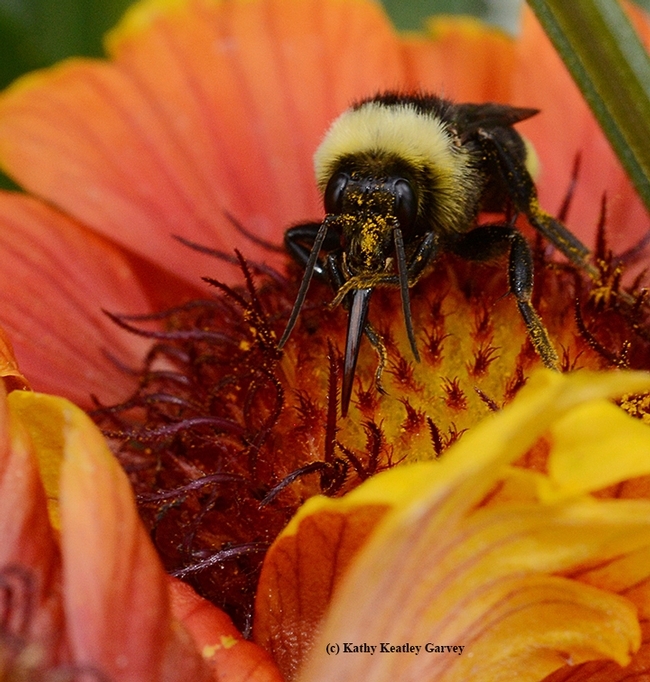
A black-tailed bee, Bombus californicus, nectaring on blanket flower, Gaillardia. (Photo by Kathy Keatley Garvey)
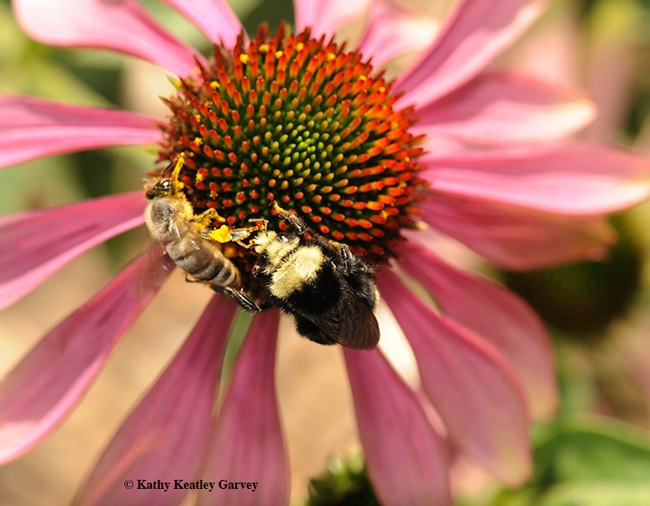
A bumble bee, Bombus vosnesenskii, and honey bee, Apis mellifera, sharing a purple coneflower, Echinacea purpurea. (Photo by Kathy Keatley Garvey)
Bailey appointed to USDA Advisory Committee on Beginning Farmers and Ranchers
John Bailey, director of the University of California's Hopland Research and Extension Center, has been appointed to the U.S. Department of Agriculture's Advisory Committee on Beginning Farmers and Ranchers by USDA Secretary Sonny Perdue. Bailey's two-year term expires on Sept. 17, 2021.
The purpose of the Committee is to advise the USDA Secretary on strategies, policies and programs that enhance opportunities for new farmers and ranchers.
“As a member of the Committee, you will advise me on matters impacting beginning farmers and ranchers, including access to land and capital, recruitment and retention of farmers and ranchers, and more,” Perdue wrote in Bailey's appointment letter. “Your role is vital as I strive to obtain the public and industry perspectives on National and State strategies, policies, and programs impacting beginning farmers and ranchers.”

Before joining UC Agriculture and Natural Resources, Bailey was the Mendo-Lake Food Hub project manager for North Coast Opportunities, where he developed a regional food hub with an integrated training, marketing and distribution system that allowed regional specialty crop growers to dramatically increase sales of their crops.
Prior to that, Bailey worked at McEvoy of Marin for 12 years. He started in horticultural operations in McEvoy's vegetable gardens and fruit and olive orchards and worked his way up to director of operations, overseeing product development, production and distribution of their botanical-based body care brand as well as national sales and marketing for their private label soap line. He also owned and operated Middle Mountain Farm, which grew and marketed specialty crops to retail and wholesale customers. He is currently a partner in a bulk wine storage company in addition to overseeing Hopland Research and Extension Center's 5,300 acres of oak woodland, grassland, chaparral and riparian environments for research and education.
“In my various roles related to, and diverse network of professionals contacts in, agriculture, combined with my experience in multiple business enterprises, I have gained experiences and knowledge which will help me provide solid advice to the Secretary,” said Bailey. “I am honored to be appointed to this committee and will do my best to advise the Secretary on issues affecting beginning farmers and ranchers across our state, and methods that show promise for assisting them in their agricultural careers.”
The Advisory Committee on Beginning Farmers and Ranchers is made up of 20 members from organizations with demonstrated experience in training beginning farmers and ranchers, and other entities or persons providing lending or technical assistance for qualified beginning farmers and ranchers. Congress authorized the committee in 1992 and since its inception, the advisory committee has been an important part of the USDA strategy to engage, support and serve new and beginning farmers. The committee is funded by the Farm Service Agency. USDA's Office of Partnerships and Public Engagement provides oversight, which ensures fiscal accountability and program integrity.

